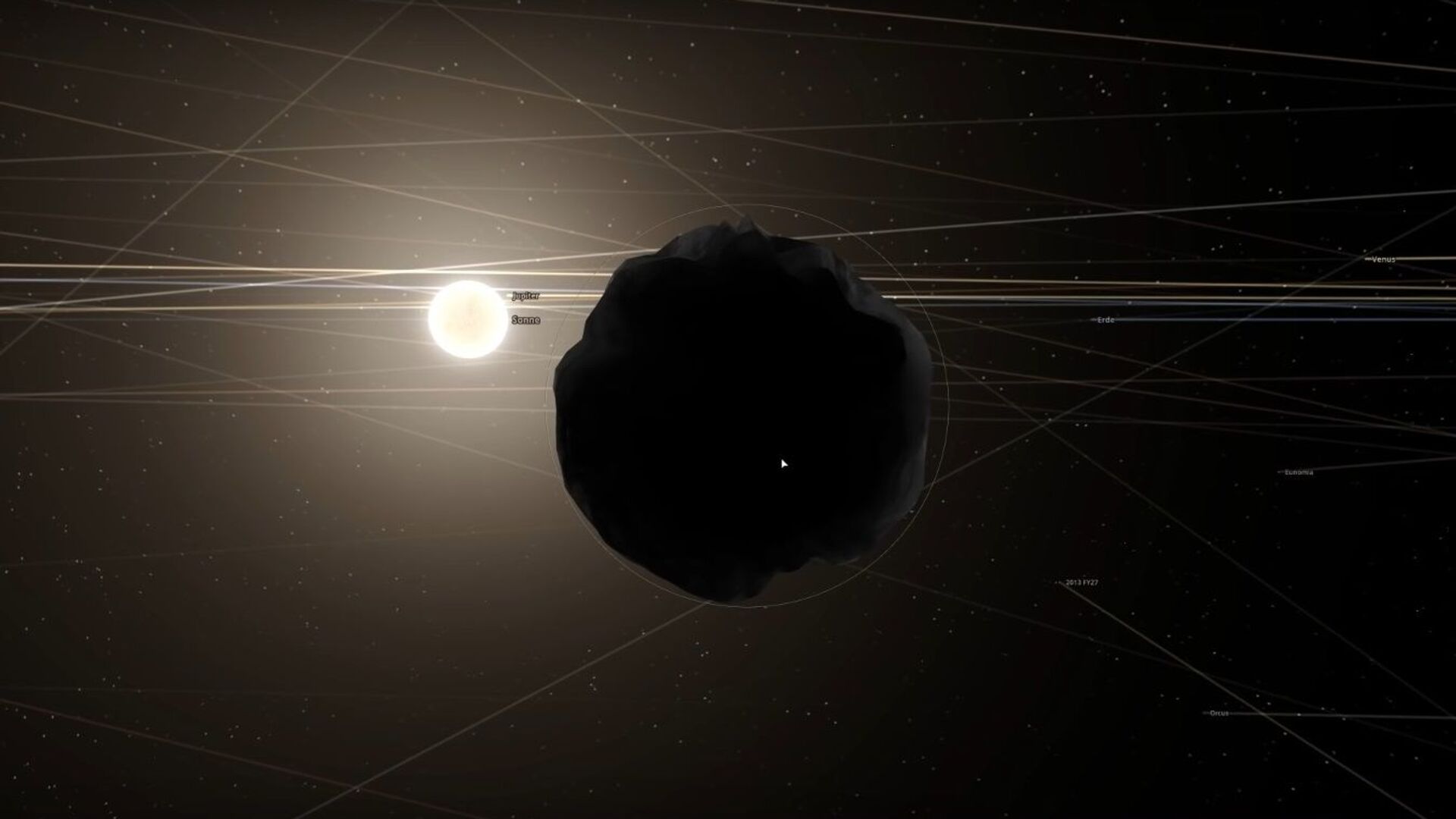Scientists Capture Detailed Image of One of the Most Mysterious Asteroids in the Solar System
Subscribe
Discovered in 1880, the celestial body – or rather its extraordinary shape – has baffled scientists for decades. It appears that the name "Dogus treatus" would fit it more, because it looks like a ham-bone that canines love to chew on. However, researchers named the asteroid after the famous Egyptian ruler Cleopatra.
An international team of astronomers has captured a detailed image of one of the most mysterious asteroids in our Solar System – 216 Kleopatra. Using the Very Large Telescope located at the European Southern Observatory in Chile, the researchers were able to view the celestial body from different angles and later created a 3D model of it.
PRESS RELEASE: @ESO captures best images yet of peculiar “dog-bone” asteroid
— The SETI Institute (@SETIInstitute) September 9, 2021
Using the European Southern Observatory’s Very Large Telescope, a team of astronomers have obtained the sharpest and most detailed images yet of the asteroid Kleopatra. https://t.co/XMATV5Pkop pic.twitter.com/Ah19Oo6quZ
After examining what they described as "the sharpest and most detailed images yet” of Kleopatra, the scientists made several discoveries. The researchers learned more about the shape of the asteroid, which they say can be compared to a dumbbell. Then they found out that one of the lobes of the asteroid is bigger than the other and determined the length of the celestial body (about 270 kilometres) and its mass (2.97 x 10 to the power of 18 kilograms).
The data, in turn, allowed the researchers to figure out Kleopatra's density. For a long time, scientists thought that it was a metallic asteroid. However, the latest calculation revealed that its density is half the density of iron. This suggests that the asteroid has a porous structure and could be little more than a "pile of rubble". Scientists say the discovery means that Kleopatra likely formed following a massive impact.
Thanks to the detailed image, the researchers were also able to more accurately define the orbits of the asteroid’s moons - AlexHelios and CleoSelene. They were named after the children the Egyptian ruler Cleopatra had with Roman politician and general Mark Antony – Alexander Helios (Sun) and Cleopatra Selene (Moon).
According to Franck Marchis of the SETI Institute, who has been researching the asteroid for years, the team's discovery could contribute to subsequent studies.
The data, in turn, allowed the researchers to figure out Kleopatra's density. For a long time, scientists thought that it was a metallic asteroid. However, the latest calculation revealed that its density is half the density of iron. This suggests that the asteroid has a porous structure and could be little more than a "pile of rubble". Scientists say the discovery means that Kleopatra likely formed following a massive impact.
Thanks to the detailed image, the researchers were also able to more accurately define the orbits of the asteroid’s moons - AlexHelios and CleoSelene. They were named after the children the Egyptian ruler Cleopatra had with Roman politician and general Mark Antony – Alexander Helios (Sun) and Cleopatra Selene (Moon).
According to Franck Marchis of the SETI Institute, who has been researching the asteroid for years, the team's discovery could contribute to subsequent studies.
"Kleopatra is truly a unique body in our Solar System. Science makes a lot of progress thanks to the study of weird outliers. I think Kleopatra is one of those and understanding this complex, multiple asteroid system can help us learn more about our Solar System", Marchis said.



